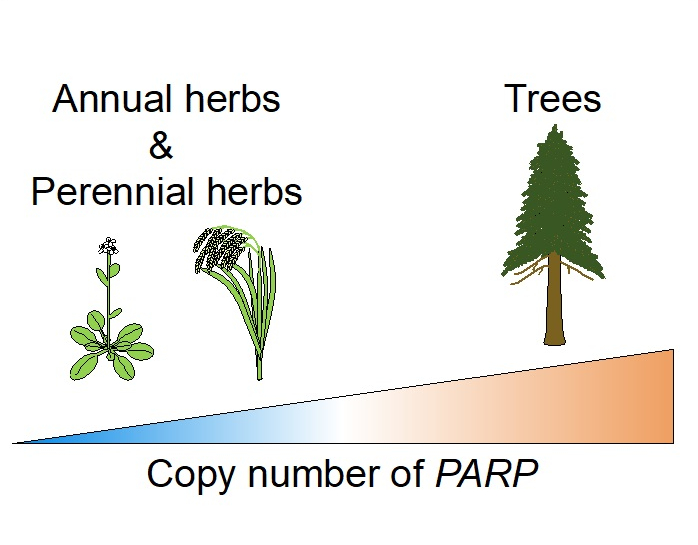研究成果 Research Results
- TOP
- News
- Research Results
- For long plant life, the secret is in DNA repair
For long plant life, the secret is in DNA repair
Researchers find high copy number of DNA repair genes in long-lived trees 2022.03.31Research ResultsPhysics & ChemistryEnvironment & Sustainability
The Jomon Sugi is Japan's oldest known tree, a massive conifer estimated to be more than 2,000 years old located on the remote island of Yakushima, south of Kyushu. But while conifers such as the Jomon Sugi can potentially live for thousands of years, some trees' lifespans are counted in decades, with other plants living only a few weeks.
For years, researchers have been looking into why some organisms live longer than others, and thanks to a growing amount of genome data, those mysteries are slowly being uncovered. One key characteristic they have found is how well an organism can deal with and repair damage to its DNA. However, despite advances in understanding the longevity of animals, DNA repair's role in the lifespan of plants has not been closely investigated.

Poly (ADP-ribose) polymerase (PARP) gene family showed higher copy number in trees than annual and perennial herbs.
Publishing in iScience, researchers from Kyushu University's Faculty of Science report that they have identified a possible gene family responsible for tree longevity. The team analyzed the genomes of 61 different plant species and found that long-lived trees had higher copy numbers of the DNA repair gene family PARP relative to herb species with short life spans.
Our daily lives are inundated with elements that damage our DNA, whether it be through our own metabolism or the ionizing radiation from the sun. The accumulated damage can lead to cellular dysfunction and disastrous consequences. Therefore, our cells work round the clock to find and repair damage within our DNA, and recent studies in animals have shown that the more DNA repair genes an organism has, the longer they tend to live.
To examine the role of DNA repair in plant longevity, Akiko Satake and her team compared 121 DNA repair gene families in 61 plant species, including trees, annual and perennial herbs, and algae.

PARP has an important role in DNA repair and biotic defense. Increased copy number of PARP would be evolutionarily favored in tree longevity.
They found that, among the diverse DNA repair gene families they studied, PARP was the only one to have an increased number of gene copies in trees relative to annual and perennial herb species. For example, long-living trees such as conifers, Douglas firs, Scots pines, and fruit trees had the highest ratio of PARP copies relative to their total number of genes.
The team explains that PARPs play pivotal roles in DNA repair and even antipathogen defense in both plants and animals and hopes to investigate its role in longevity further. They also acknowledge that the underlying mechanism for the differences in lifespans between long-lived and short-lived tree species remains unknown, but they intend to use their new findings for further study.
###
For more information about this research, see “Copy number analyses of DNA repair genes reveal the role of poly(ADP-ribose) polymerase (PARP) in tree longevity,” Yuta Aoyagi Blue, Junko Kusumi, and Akiko Satake, iScience (2021). https://doi.org/10.1016/j.isci.2021.102779
This release is also available in Japanese.
Research-related inquiries
Akiko Satake, Professor
Department of Biology
Contact information can also be found in the full release.
- TOP
- News
- Research Results
- For long plant life, the secret is in DNA repair































